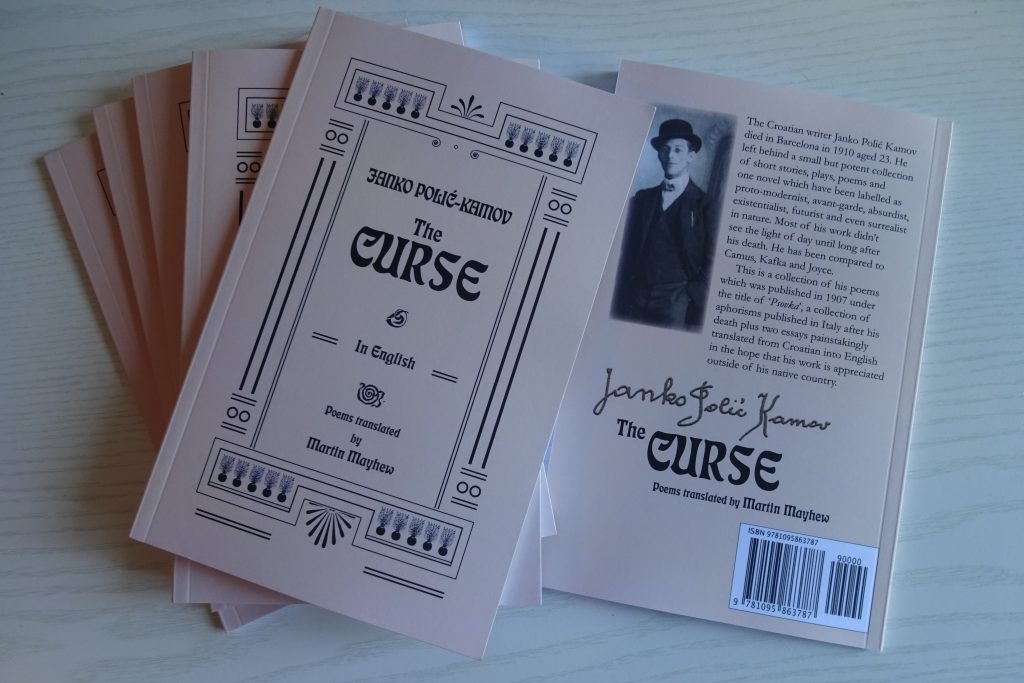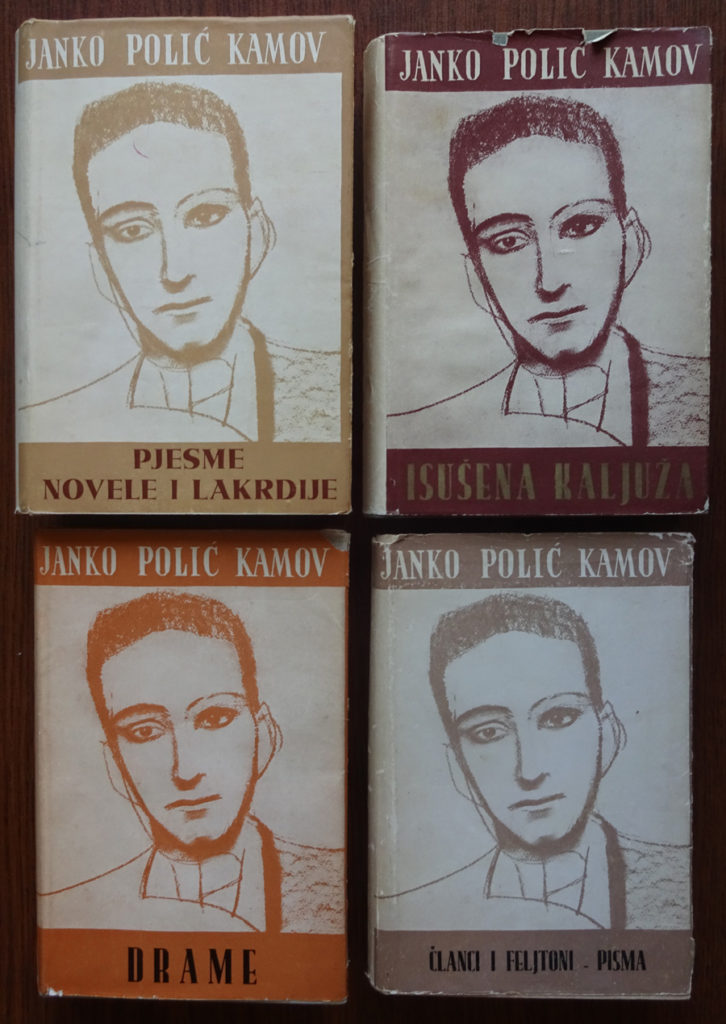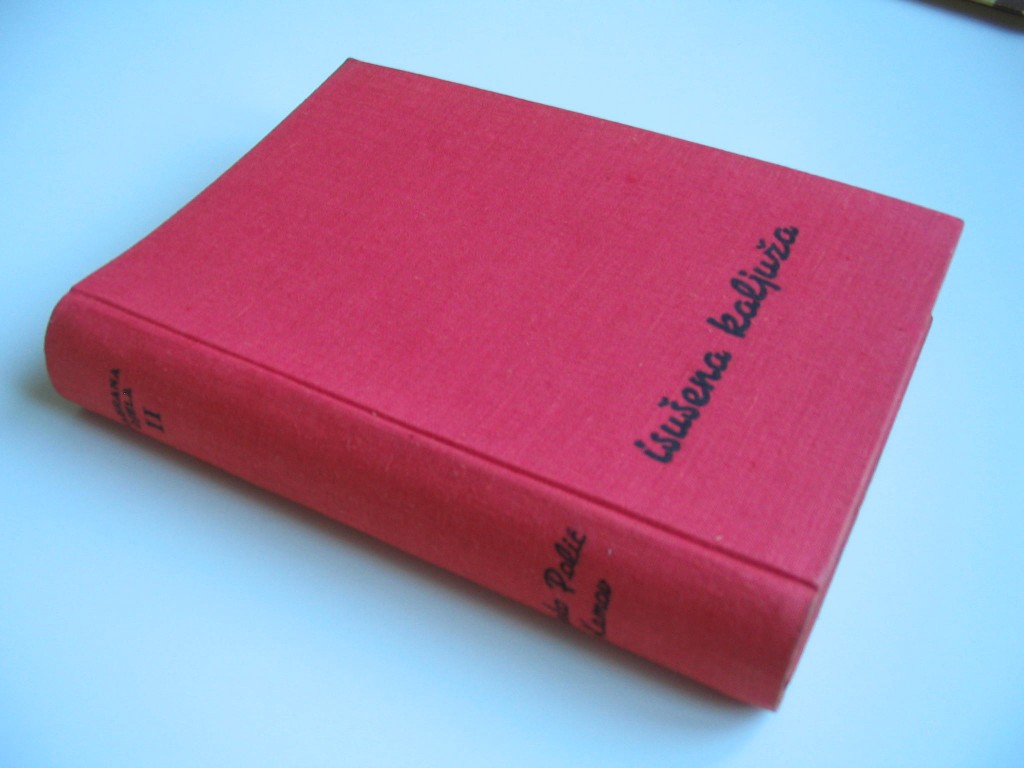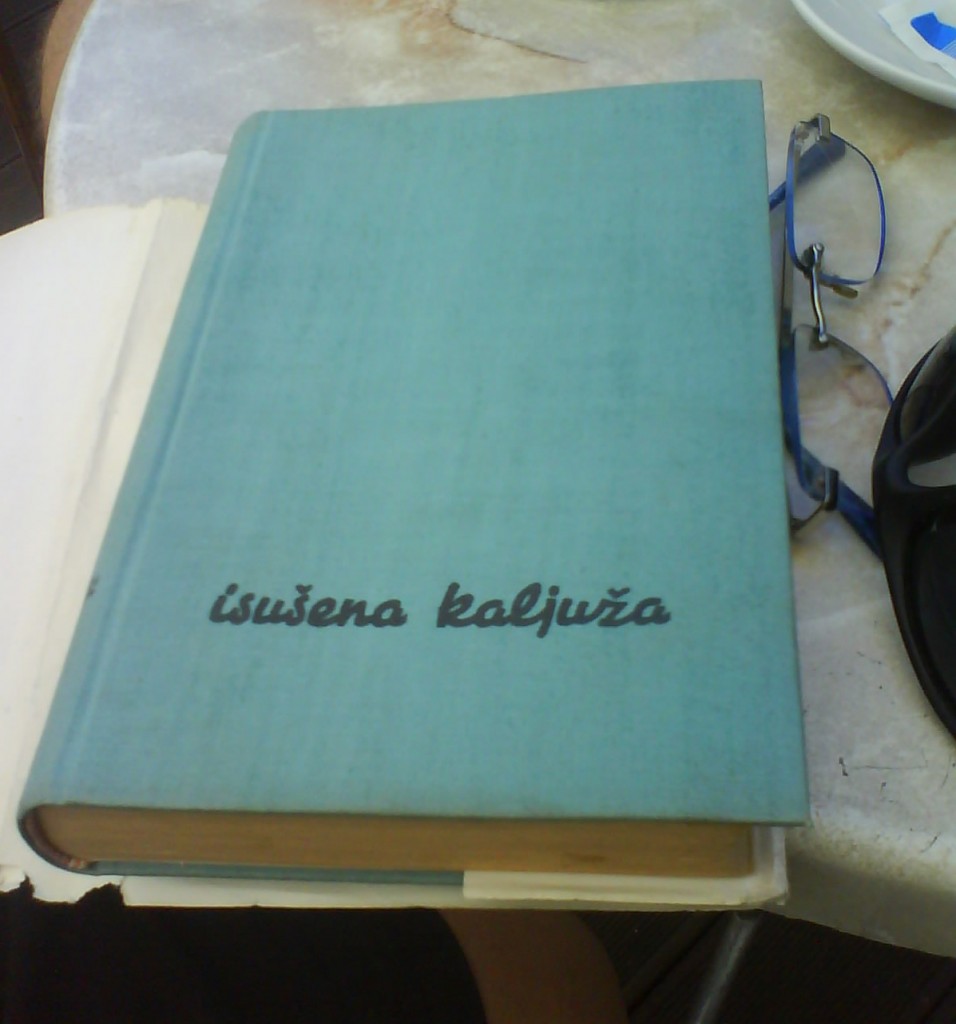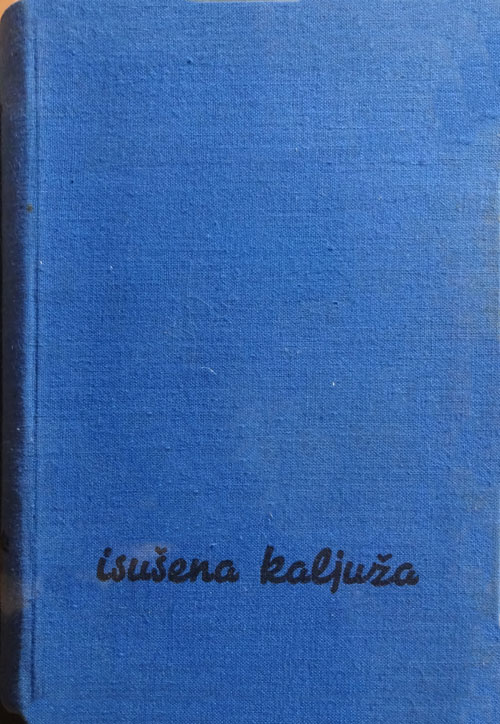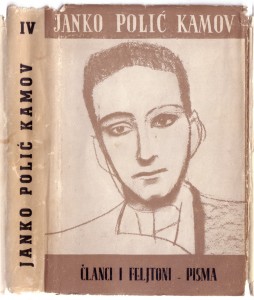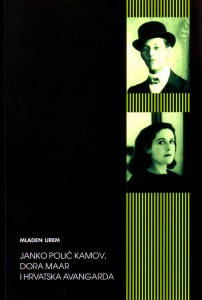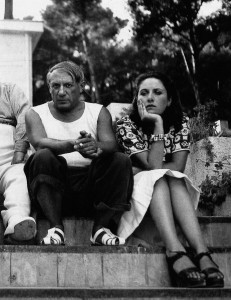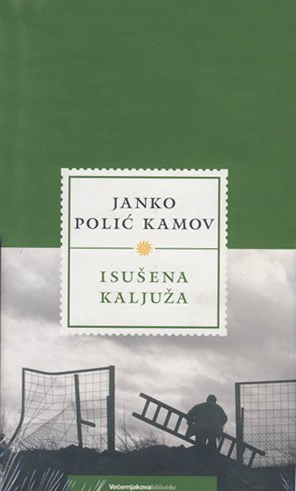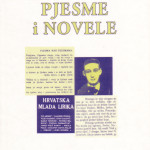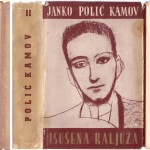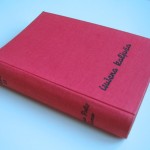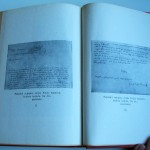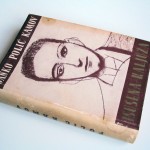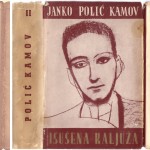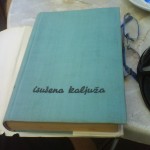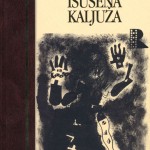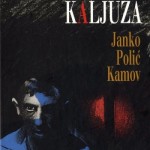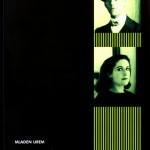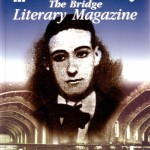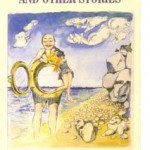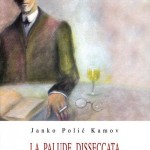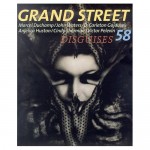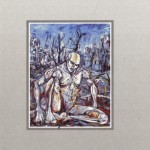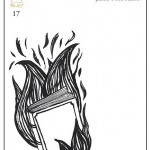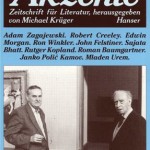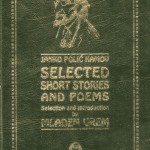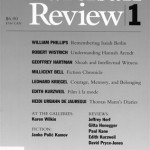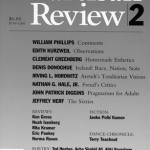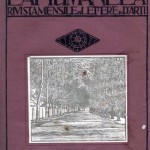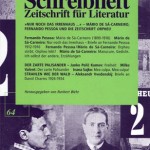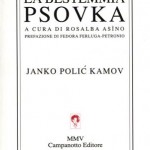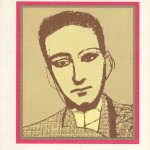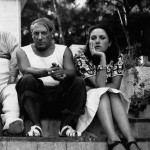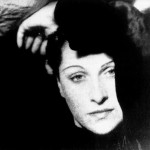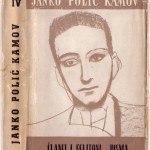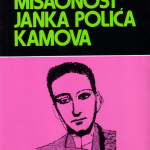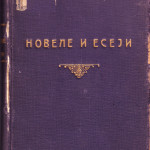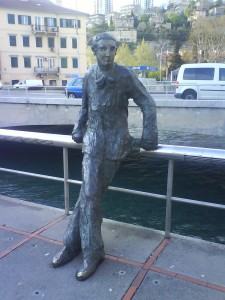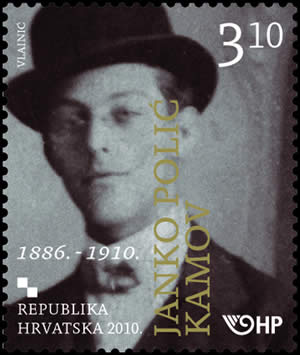Online interview from 2014
This is an interview conducted by Dario Sušanj for velikabritanija.net and published 09.09.2014.
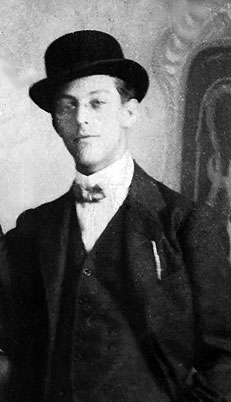
Janko Polić Kamov, a Croatian writer and a poet, died at a very young age, but left behind a major work of Croatian modernist literature: the novel ‘Isušena kaljuža’ (‘The Dried Up Mire’). Literary critics often agree that his work was way ahead of the worldwide movements which were to follow in the years after his death, like surrealism and modernism, with writers such as Joyce, Kafka and Camus later leading the way, and they often label Kamov’s work as ‘revolutionary’. However, Kamov’s novel and much of his work has never been translated into English and an Englishman living in Croatia, Martin Mayhew, is now working on translating Kamov’s important novel. As Martin is doing this, he is also compiling a unique glossary of archaic and almost forgotten Croatian words and phrases which he hopes will be useful to any future translators who may embark on a difficult task of translating a work of Croatian modernist literature into English.
“They set off on a walk. Across the square passed a funeral,
– An excerpt from the yet unpublished translation of “The Dried Up Mire” by Janko Polić Kamov, as translated by Martin Mayhew
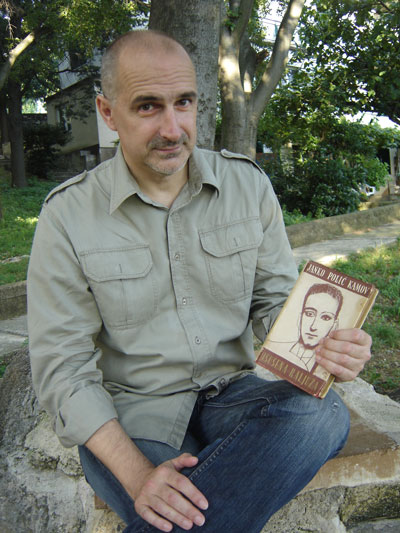
Martin Mayhew has been living in Rijeka, Croatia, for about ten years; he first visited the country in 2000 as a journalist, on a tour organised by the Croatian Tourist Board, but in 2003 he moved from his hometown of Brighton to the city of Rijeka, one of the main ports in the Northern Adriatic and a city known for having a lively cultural and also alternative scene, not much unlike his own Brighton. As his association with Rijeka grew stronger and stronger, it is no wonder, of course, that Martin, as a lover of good literature, also quickly found out about the works of Rijeka-born writer and poet Janko Polić Kamov who had been briefly active in the early years of the 20th century. Martin decided to embark on a challenging and difficult task – we could even call it a linguistic adventure – to translate Kamov’s most important work, “The Dried Up Mire”, into English. This has never been done before, probably owing mostly to the complexity of the task and the fact that Kamov’s work is still not well known and recognised outside the region – even though he is often compared to other modernists such as Joyce or Kafka.
Martin recently published a few excerpts from his yet unpublished translation on his blog, hoping, of course, to be able to find a publisher who would be interested into bringing this key work of Croatian modernist literature one step closer to the English-speaking audience across the world. This is why I caught up with Martin, asking him a few questions about the challenges he faced whilst working on this translation.
Martin, this is a rather predictable question to begin with, but why Kamov? Except for the obvious Rijeka connection, how and why have you decided to translate his works?
When I first came to Croatia in 2000 I was given a copy of ‘Southerly Thoughts and Other Short Stories’ a collection of stories by Croatian writers. Amongst the collection were two by Janko Polić Kamov which grabbed my attention as being something extraordinary, gritty, uncompromising. A couple of years later when I began working as a translator in Rijeka I was approached to make an offer to translate his novel ‘Isušena Kaljuža’ into English. Unfortunately that deal did not come to fruition and so I decided to continue personally with the translation of Kamov’s work, primarily of his short stories which along the way would allow me to continue with the English version of his novel, the first chapter of which I had already completed and shelved. For me the more I translate his work, the more I relate to it, which is also something I think other readers experience and just recently I have discovered that there are also other people working on the translations of his works into two other languages.
Why do you feel that ‘The Dried Up Mire’ (‘Isušena kaljuža’) is or could be relevant to the English-speaking audiences today?
So many people here in Rijeka tell me that ‘Kaljuža’, and Kamov’s work in general, is very important for the history of Croatian literature, because it is said that his work was way ahead of the worldwide movements which were to follow after his death. Surrealism, modernism, avant-garde, existentialism and revolutionary are some of the labels which have been attached to his work. In his work he refers to the political events which were happening in Croatia (at his time under Austro-Hungarian rule), he was against the system and briefly spent time in prison for his political beliefs. In this sense he could be seen as a champion for independence or more clearly a champion against repression, hypocrisy, elitism etc. in general. His work deals mostly with the human condition, internal conflicts, heaven and hell, madness, the dark sides of life, society, sex, alcohol, violence, death and religion. He was an early pavement writer. So, in this way his relevance to the English-speaking audience is important in that his work, when translated well into English, will shed light on the history and literature of this part of the world, in a specific period of time but even more so on a style which pre-dates the movements which were approaching on the literary horizon.
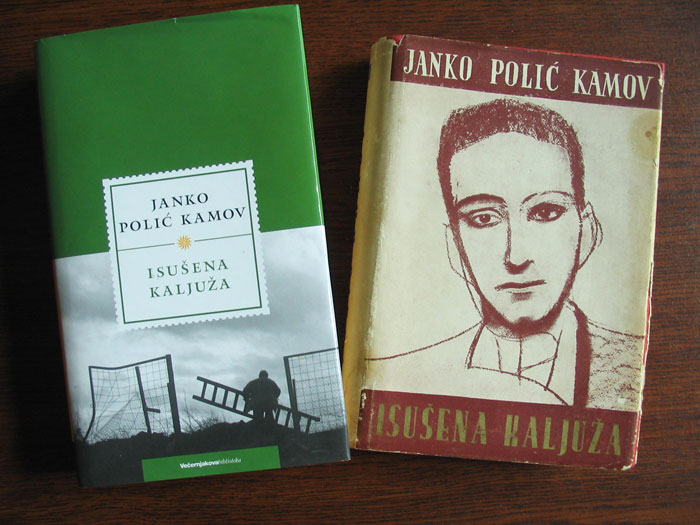
Would you compare Kamov’s work to any of his contemporaries in the English-speaking world or, generally, in Europe? Kamov’s life was cut very short by illness, and while ‘Kaljuža’ is his most important work, who knows whether he might have even had a chance to be compared to the likes of Joyce and others, had he just lived longer?
Firstly I must say that I am not literary expert. My study of literature ended with secondary school Shakespeare in England, but saying that I do like to read, and Kamov’s work, for me, is exceptional and it certainly deserves to be translated well and published. In that way literary scholars can come to their conclusions about it. Yes, Croatian literary circles have compared Kamov to Joyce, Kafka and Camus and have concluded that ‘Isušena kaljuža’ is in the top ten of Croatian writing, if not number one. He himself was influenced by the writers of his time and makes references to them in his work. It would seem that his work was ignored or maybe even suppressed during his lifetime due to its content and possibly because of other, more influential writers. He wrote the novel from 1906-1909 but it didn’t see the light of day until 1957, almost fifty years after his death. If he had lived who knows what may have become of him.
I have followed your posts on Facebook as you worked on this translation and it seems you stumbled upon many Croatian words which have proven difficult, or at least challenging, to translate into English or even properly explain using modern Croatian. How difficult was it really to translate a modernist novel containing so many archaic words?
Janko Polić Kamov was born in Rijeka, modern day Croatia but then part of the Austria-Hungary, on 17 November 1886, and died at a very young age, being just 23, on 8 August 1910 in Barcelona, Spain.
Kamov’s work includes a vocabulary a lot of which doesn’t seem to fit into what is today known as modern Croatian. Slavic versions of words from French, German, Italian are mixed in with what are now Serbian and Bosnian today which makes their translation into English a real investigation. This together with the fact that he uses two verb tenses – imperfect and aorist – which are virtually unused these days, and the flashbacks and surrealism in the stories which seem unconnected and random, plus the unusual syntactical structure of his sentences, means that translating his work, for me, has almost become a process of interpretation. Every now and then I will post a word on Facebook which I am struggling with and invite my friends to offer a solution, sometimes causing heated, but mostly good humoured, discussions.
You are also compiling a glossary of terms as you continue working on this translation. Do you feel this could be useful and relevant to other translators who might eventually decide to translate other works of literature from this period?
Yes, as I am translating his work I am compiling a glossary of almost every word he uses in all of his works – it contains at least three English equivalents of each word. In this way I don’t need to remember every single word when it appears again as I translate. In compiling this I have also compiled a dictionary of late 19th and early 20th centuries Serbo-Croatian to English from free online resources as well as a large selection of Croatian dialectal words. In this way I’m trying to use the English vocabulary from the same period as he wrote. In the end the final glossary of possibly 50,000 words should be a unique collection, which could be useful for the translation of similar period works.
Give us a top three words which you think even the native Croatian readers today would have trouble understanding and let’s see whether our readers have a problem with them! What are your English translations for these?
Well as Croatian is not my native tongue is it not so easy for me to say. Much of the time it is the context in which he uses the words and expressions which take time to translate. Here are three such examples in no particular order: none are a woman’s breasts (origin is still unclear), budlaj – werewolf (unknown origin), bilikum – a special cup (German origin). Modern Croats would certainly have trouble understanding these without a proper explanation.
Another point to be taken into consideration is that over the decades various editions of his works have had some slight amendments made by publishers and editors – they have changed some spellings or even omitted words for whatever reasons, so I am trying to use the originally published versions for my translation.
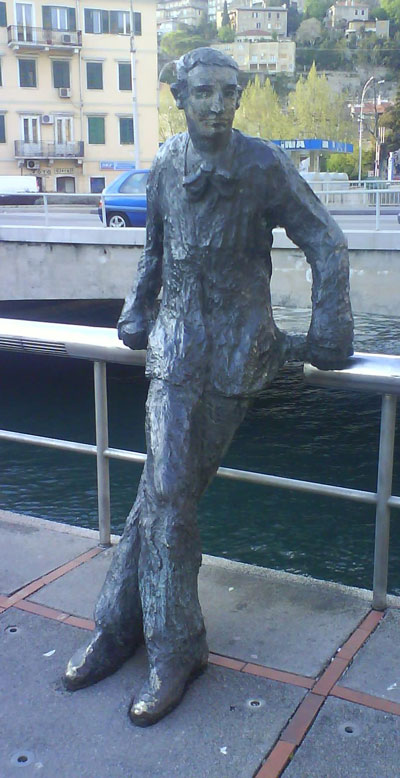
Would you like to see any other Croatian authors translated into English? Any that you plan to do yourself, should you be successful in finding a publisher for Kamov’s work?
There is enough of Kamov’s work to be translated and published as a complete anthology. This would be a great personal achievement. Of course if the cultural, literary or even academic entities in Croatia could provide funding for such a venture in order to push Croatian literature out further into the English speaking world, it would be a great step forward in the appreciation of all the literature from this part of the world. I am sure that there are many Croatian authors, past and present, who deserve to be translated. In fact today in Rijeka itself there are numerous young writers, many of whom are admirers of Kamov’s work.
Are you in contact with any publishers, in Croatia or in the UK, who might be interested in publishing your translation when it’s finished?
Yes, I have been communicating sporadically with a couple of publishers in Croatia and the UK who have shown interest, but due to the economic climate in Croatia being as it is, and the fact that publishers outside the country have yet to fully appreciate Kamov’s work, it is proving difficult to make an impression.
Thank you so much for your time and this interview, Martin. Should our readers wish to find out more about you, I suggest they have a look at your blog and, of course, if they feel that they can help you in finding a publisher and finishing your work, they are certainly free to get in touch!
*****
This interview was conducted by Dario Sušanj for velikabritanija.net and published 09.09.2014.
Since this
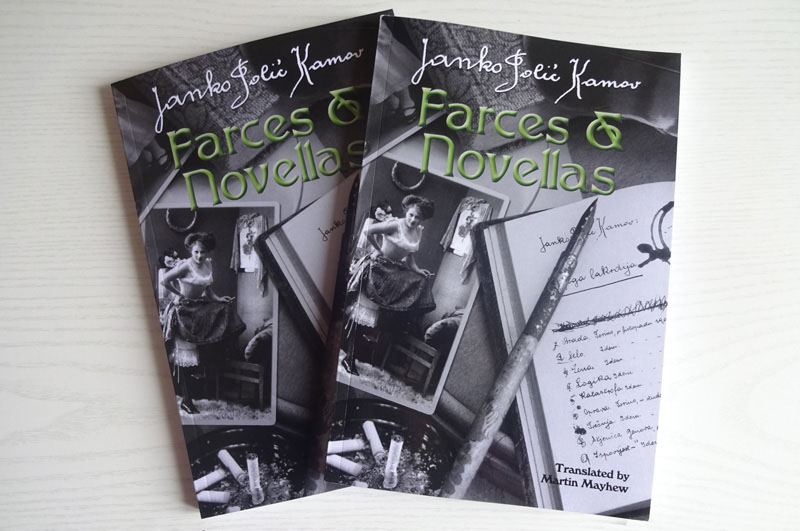
In May 2019 I published my second book of the work of Janko Polić Kamov – the translation of a collection of nine poems which he published in 1907 – ‘Psovka‘ (‘The Curse‘). More info here
